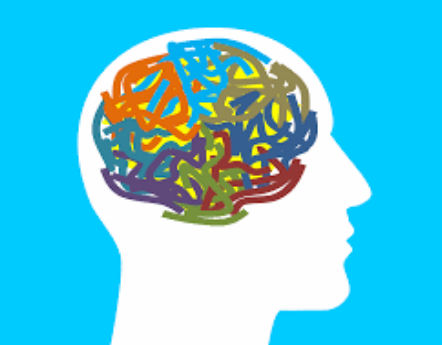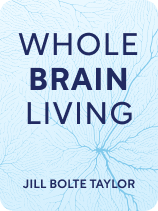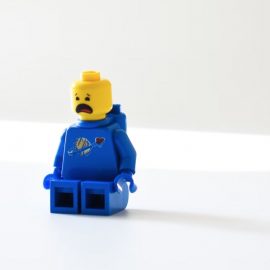

This article is an excerpt from the Shortform book guide to "Whole Brain Living" by Jill Bolte Taylor. Shortform has the world's best summaries and analyses of books you should be reading.
Like this article? Sign up for a free trial here.
What are the best ways to improve your brain’s health? How does addiction negatively impact your brain?
In Whole Brain Living, Jill Bolte Taylor describes a few tips for how to use the BRAIN technique in your daily life. You’ll be able to improve your relationships with others, improve your emotional well-being, and master the art of embodying each brain character when you need them.
Below are the ways to improve brain function that you can practice every day.
1. Get to Know Other People’s Characters
Since everyone you interact with has their own four characters with conflicting desires and personalities, one of the ways to improve brain function and relationships with others is by increasing our awareness of their characters. For example, you might recognize that your friend embodies their joyful Character 3 when you go hiking together, but they tend to shift into their hostile Character 2 when you play competitive board games. Then, you can use these insights to maintain a positive dynamic (perhaps stick to hiking) or talk with them about negative patterns (“Why do you always flip the Monopoly board when I win?”).
(Shortform note: Similar to Taylor’s four characters, Ray Dalio’s Principles: Life and Work] describes the “two yous”—a rational and emotional part of your personality—that are present in any conflict. While Taylor recommends increasing your awareness of the characters as a way to improve relationships, Dalio focuses on specifically embodying the rational “you” to resolve disagreements. Dalio says that for these four different “yous” (two “yous” in each person) to have a productive conflict, avoid letting the emotional “you” take over and instead channel your rational “you” by asking questions and being open-minded.)
2. Check in Regularly With Your Four Characters
Taylor says that like with other skills, using the BRAIN technique to your advantage takes practice. She recommends making the BRAIN strategy a habit by going through the steps regularly: for example, every morning when you wake up, nightly before bed, whenever you feel a strong emotion coursing through your body, or when you’re in the middle of an interpersonal conflict. Taylor says that when you choose a specific mental pathway enough times, it becomes the default. For instance, if you consistently and intentionally suppress your Character 1 (who makes you feel anxious when you’re trying to enjoy unstructured fun time), eventually your Character 3 will learn to automatically take over in those situations.
(Shortform note: In A Mind for Numbers, Barbara Oakley asserts that one benefit of making mental pathways habitual is that it makes your brain more efficient by freeing up the energy that would otherwise be spent exerting willpower to act or think a certain way. Based on this argument, practicing BRAIN regularly (and making certain mindsets habitual) could not only enhance your emotional well-being but also allow you to allocate your mental resources to other areas of self-improvement, like learning a new skill.)
Another good time to assemble your four characters, Taylor says, is when your brain feels like it’s getting sucked into addictive technologies. She claims that many technologies are designed to keep us hooked and can make us more socially isolated because we’re so engrossed in them that we neglect interpersonal connections. She suggests that this may be especially true for younger generations who’ve been raised in close proximity to technologies like tablets, games, and cell phones. By using the BRAIN technique, we can choose to disconnect from technology and decide where we can best allocate our time and attention.
(Shortform note: Thibaut Meurisse’s Dopamine Detox explains that many tech companies keep us hooked on social media by stimulating a reward-seeking cycle whenever we get a burst of dopamine from receiving likes, comments, and other forms of social validation. In contrast to Taylor, who recommends BRAIN as a mindfulness strategy to reallocate our attention, Meurisse recommends combatting addictive technologies through a dopamine detox—eliminating activities that trigger dopamine. These activities include browsing the internet, watching tv, scrolling through social media, eating sugar, and over-exercising.)
3. Recognize Patterns and Strategize in Advance
In addition, Taylor recommends using the BRAIN strategy as a tool to reflect on your behavioral patterns and strategize in advance for how you’ll react in a specific situation. For example, if using the BRAIN technique has taught you that your Character 1 likes to take control of vacation plans to the point that other people aren’t having fun, you can plan ahead (still satisfying a Character 1 urge) and avoid this problem by getting feedback from others about what they want to do or only scheduling activities for part of your next vacation.
(Shortform note: In What Got You Here Won’t Get You There, Marshall Goldsmith says that once you’ve identified behavioral patterns you want to change (which he focuses on describing in a work context), it’s also important to frequently discuss your desired changes with the people around you so they can help hold you accountable. In addition, Goldsmith recommends some specific steps before you jump into strategizing future actions for self-improvement: Apologize for your negative past behavior, and announce your intention to change your habit.)
4. Work Toward Recovery From Addiction
Taylor explains that when someone is addicted to drugs or alcohol, there are common patterns in how the characters’ dynamics play out. She says that in order to have long-term success in their recovery, all four characters have to participate in the process. Here are the common roles for each character and how they can cooperate in recovery:
Character 1 tends to judge themself harshly for failing to quit. To avoid letting down their loved ones because of a relapse, they’ll scheme and lie to hide their substance use. Taylor says that to heal, Character 1 needs to let go of their negative self-judgments.
Character 2 experiences distress from a whirlwind of negative emotions: They feel emotionally isolated from others, guilty about their shortcomings, angry toward others who may have played a role in their suffering, and fearful that others will stop loving them because of the addiction. Taylor claims that Character 2 has to end these cycles of guilt and resentment and focus on a brighter future.
Character 3 wants to leave their past behind and enjoy periods of sobriety with their loved ones. However, Taylor writes that this desire to reconnect with others has to be accompanied by a commitment to ongoing effort.
Character 4 is the one who reminds an addict that each day is a new opportunity to make positive changes. Taylor also claims that because Character 4 is attuned to the powerful cosmic energy that’s in everything (what she calls the “life-force of the universe”), Character 4 is also the higher power that enables spiritual healing during a lifelong recovery from addiction.
Re-examining the Roles of the Four Characters in Recovery
Although Taylor asserts that each of the four characters has to actively participate in someone’s recovery from addiction, her profiles of the characters suggest that it’s mostly the silencing of Characters 1 and 2 and strengthening Character 4 that’s necessary for long-term recovery.
Taylor says that Character 1 has to end their harsh self-judgment, but she also describes this tendency as part of Character 1’s fundamental personality. Similarly, she writes that Character 2 has to end cycles of negative thinking that exacerbate the addiction, but according to Taylor, Character 2’s emotional reactions are inherent to the limbic system’s self-defense mechanisms. For example, an addict may fear they’ll lose relationships as a result of their substance abuse (especially if it’s happened before), so their Character 2 might instinctively push their loved ones away to avoid feeling abandoned.
Based on Taylor’s framework of the four characters, Characters 1 and 2 can’t simply change their nature. Instead, a more effective strategy for recovery might include frequent BRAIN Huddles, in which the person intentionally decides to tap into their Character 4—the character who reminds the addict that they’re powerful and worthy. Although many recovery programs (such as Alcoholics Anonymous) demand belief in a higher power beyond the individual, Taylor argues that Character 4 is the higher power that can bolster your mental defenses against the addiction.
On the other hand, Characters 1 and 3 also have strengths that could contribute to the recovery process in a different way than Taylor describes. Since Character 1 exhibits higher-level reasoning and excels at planning and forethought, they might help a recovering addict avoid temptation—for example, by avoiding environments where drugs or alcohol are available. Character 3 might help by allowing the recovering person to focus on the positives of the current moment rather than dwelling on the painful experiences of the past.

———End of Preview———
Like what you just read? Read the rest of the world's best book summary and analysis of Jill Bolte Taylor's "Whole Brain Living" at Shortform.
Here's what you'll find in our full Whole Brain Living summary:
- How you can choose to access different parts of your brain
- The four areas of the brain that perceive and navigate the world differently
- How to achieve emotional well-being by getting to know your brain better






